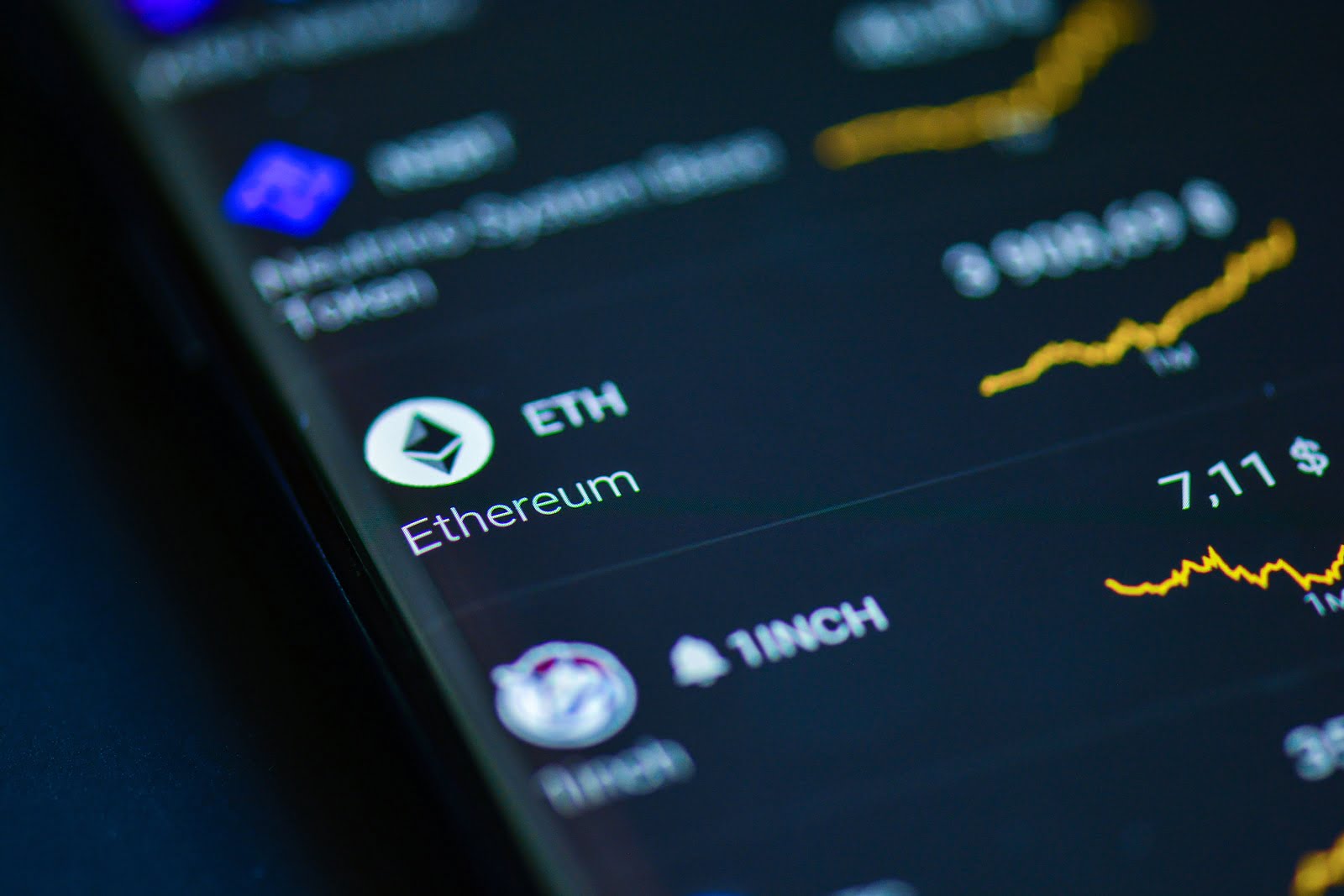Here’s what you need to know before you add bitcoin to your portfolio
Even if you don’t follow financial news closely, you’ve likely heard a thing or two about cryptocurrency. Some countries are establishing it as legal tender, and new coins are popping up more frequently. At one point in time, digital money seemed like something reserved for tech obsessives. But major financial players are getting involved, and the most popular cryptocurrencies are gaining steam in mainstream circles. This begs the question – should crypto be part of your portfolio?
According to Tyrone Ross, CEO of Onramp Invest, you have some due diligence ahead of you before you start investing.
“Only after an investor has adequate savings and has paid down any debts, as well as developed prior investing experience and some tech savviness, should they consider investing in this novel asset class,” he said.
In other words, crypto can absolutely be a part of your investment strategy, but it’s imperative that you learn as much as you can. This primer is a great place to start.
What is cryptocurrency and how does it work?
Let’s start with the basics.
Cryptocurrency is digital money – it’s stored, accessed, and traded exclusively online – but it has real-world value and can be used to purchase tangible goods and services. However, unlike the cash and credit cards in your wallet, crypto is decentralized. It’s controlled by a peer-to-peer computer network instead of the government, and, in most instances, its value isn’t determined by a governmental entity or pegged to any other type of currency. Some cryptocurrencies, like bitcoin, also exist in limited supply, which (at least theoretically) helps them maintain their value and creates demand.
You might be wondering – if the government doesn’t regulate crypto, how does it operate?
Crypto transactions are facilitated using blockchain technology. In essence, blockchain is a shared ledger that records transactions and tracks assets. Every time a transaction takes place, the data is recorded in a “block”. Each new block is connected to the existing blocks, which ensures the time and date of the transaction are recorded chronologically. Every time a new block is added to the chain, it reinforces the strength of the block before it. All of these blocks create an indisputable ledger of verified transactions.
That ledger is immutable, meaning no single participant can change the data recorded in the blockchain. Also, smart contracts are used to establish rules and conditions during transactions, ensuring that funds or assets are only exchanged after the preset conditions have been met. And all of this happens online, separate from banks and other institutions, allowing everyday people a safe and secure way to conduct financial transactions without having to deal with middlemen. It’s an extremely efficient way to get things done.
With crypto specifically, this is how blockchain comes into play. Let’s use the most well-known cryptocurrency, bitcoin, as an example. Each bitcoin is stored in a digital wallet, either on a smartphone or a computer. When you buy or sell bitcoin, a network of thousands of computers, called nodes, confirms that the transaction is legitimate. Then your transaction is recorded on the blockchain, and you either get your bitcoin or receive the appropriate funds for it. This happens online, often between peer-to-peer users or through a crypto exchange, meaning no bank needs to be involved. You don’t need an appointed official, a bank representative, or anyone else to approve the transaction first. This all happens in record time, often with an immediate turnaround.
In fact, blockchain technology serves as the foundation for thousands of coins beyond bitcoin, and it’s even being used in an increasing number of financial transactions, including real estate purchases.
How do I buy cryptocurrency?
Since the crypto market is still nascent, there are lots of ways to buy in. Among the most simple and secure are established exchanges and apps like Coinbase, Robinhood, and TradeStation. The experience somewhat resembles buying stocks on sites like E*Trade. But it’s not exactly the same.
“Always educate before you allocate,” Ross said. Potential crypto investors need to develop a strong working knowledge of the crypto ecosystem first before jumping in. So, take the time to poke around and explore all the options out there. You can even get some practice before using your hard-earned money. TradeStation offers simulator accounts, which you can use to test your skills and get familiar with crypto trading.
When you’re ready to buy, you don’t need to front the cost of an entire coin. As of this writing, one bitcoin is about $61,000. That can seem like a lot to invest in a new and untested market. But don’t worry. You don’t need to fork over tens of thousands of dollars. Since bitcoin can be split into smaller units, called satoshis, you can buy parts or fractions of this coin, letting you get in on the action without having to spend too heavily.
A satoshi (named after Satoshi Nakamoto, the creator of bitcoin) is one hundred millionth of a single bitcoin (0.00000001 BTC). So just understand that you can spend $10, $100, $1,000, or pretty much any amount you want, and buy a piece of bitcoin.
What coins should I know before I invest in cryptocurrency?
Bitcoin is the most popular – its success and its application of blockchain technology have laid the groundwork for countless other coins. It also holds the greatest value and is the most widely available. El Salvador recently deemed it official tender, there are bitcoin ATMs around the world, and there are plenty of businesses that accept it as payment. It’s a great place to start your crypto journey, but it’s not the only coin you should know about.
Altcoin is an umbrella term that refers to non-bitcoin crypto. As of November 2021, 60% of the crypto market was comprised of altcoins: there were more than 12,000 of them, with new ones constantly being developed. Some of the most popular include Ether, Tether, Cardano, Binance, and XRP – they each have multi-billion-dollar market caps. (Bitcoin reigns supreme, however, with a reported $1.1 trillion market cap; that’s roughly 45% of the crypto market). A majority of altcoins also operate using blockchain technology, but some, like Ether, do so in a completely different way and operate on the Ethereum network.
Bitcoin and most altcoins operate using the Proof-of-Work (PoW) model, in which a large network of computers needs to solve a mathematical puzzle to verify transactions and maintain the integrity of the cryptocurrency. In contrast, Ethereum uses the Proof-of-Stake (PoS) model, which leans on a smaller group of validators to do this work. As a crypto investor, the differences between the two models will be unnoticeable. The real contrast is in their environmental impact. PoW requires several computers and lots of electricity, which strains environmental resources. PoS is more eco-friendly. Amid newly raised concerns about the sustainability of crypto, newer coins are following in Ether’s footsteps. But even bitcoin mining isn’t as environmentally taxing as it used to be. One reason: most mining is now done in the United States; previously, most mining occurred in China.
There are also stablecoins. Stablecoins, like more traditional currency, attempt to peg their value to other currencies or commodities like gold, with the goal of controlling volatility. These coins are growing in popularity, slowly but surely.
Like all other aspects of crypto, do your research before deciding which coin type is best for you.
Market volatility
Stablecoins aside, the crypto market can be highly volatile. This is for a few reasons. First, crypto is a nascent market, meaning there isn’t a lot of history or guidance around the best pricing. Second, there’s no regulation, so just about any factor can induce a wild swing. If a company like Tesla decides to stop accepting bitcoin (as it did in early 2021), or a country like China cracks down on crypto transactions (as it did throughout 2021), this can scare investors, and there’s nothing to stop the price from tanking — at least temporarily.
There’s also the fact that crypto like bitcoin is scarce. There’s a limited supply (there are 18.7 million bitcoins in the market and the threshold will max out at 21 million). The higher the degree of perceived scarcity, the greater the demand. This can drive prices much higher. For instance, some people extremely bullish on bitcoin — including many analysts — suggest that the price of a single bitcoin may one day reach $250,000 to $500,000 or more in just a few more years. Obviously, only time will tell.
So, to a degree, investing in crypto is a gamble. It lacks the relative stability we’ve come to expect from the stock market. There can be wild swings there, too, but they’re usually somewhat predictable, and investors have time to act. Crypto is a different animal. Because of this volatility, think critically about the funds you invest. Be prepared to lose or at least keep your money invested long-term.
How much crypto should I buy?
At the moment, there’s no standard recommendation here, though Ross pointed to a recently published research report from Fidelity Digital Assets that showed a .5-1% bitcoin allocation in a portfolio could increase an investor’s risk-adjusted returns.
Most financial advisors are currently suggesting people put 1% to 2% of their investment funds into cryptocurrency. In my opinion, that’s very conservative — and likely a function of many experts not yet having wrapped their heads around crypto. A 5% allocation invested over the long haul in leading tokens, such as Bitcoin or Ether, would still be low to moderate risk. But it’s ultimately about your risk tolerance.
“Due to the volatile nature of the asset class,” Ross said, “individual investors should never put more into crypto assets than they’re willing to lose for good.”
Additionally, in making your decision, think long-term. Ross suggests investing a fixed amount on a consistent schedule, as this is an impactful way to counter crypto’s volatility.
How can I access and spend my crypto?
Let’s say you benefit from crypto’s promising upside. How do you access your money, and where can you spend it?
If you buy and trade crypto through one of the main exchanges, then you’d sell your coins and cash out just as you would via a traditional stock exchange. Each exchange may assess different fees or follow different processes, but ultimately, they act as a third party to ensure the safety of your transaction.
Depending on where you live or other ways that you purchased crypto, you may be able to use a Bitcoin ATM, a Bitcoin debit card, or a peer-to-peer exchange. But accessing these options is highly dependent on your location and requires some knowledge about the market.
In the near future, you’ll be able to spend crypto at many of the places you patronize.
“As investors and the general public continue to get up to speed on the asset class and the many practical applications of decentralized finance, adoption will only increase,” Ross said. In fact, several retailers are adapting as we speak, including Microsoft, Home Depot, Starbucks, and Overstock, among many others.
Conclusion
Cryptocurrency is likely the currency of the future. It’s revolutionizing the way we conduct financial transactions of all types, and in many ways, it’s putting the power back into investors’ hands. But the crypto market is still fairly new, is evolving, and it lacks the stability and norms that are commonplace with more traditional investments. To get involved, and avoid getting burned, take the time to learn about the different coins, the exchanges, and the idiosyncrasies of the market.
There’s still much we don’t know about crypto, but one thing’s for sure: with well over \$2 trillion in assets and thousands of tokens available, cryptocurrencies are bound to be here to stay, so now is the right time to get up to speed.








